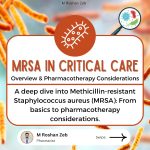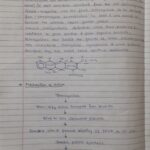Pharmacy Exam
Guide
Step I
PHARMACEUTICAL
BIO-CHEMISTRY-I
st
1 Edition
(p1c3)
—————————————————————————————————————————–
All rights reserved. This book is protected by copyright. No part of this book may be
reproduced or transmitted in any form or by any means, including as photocopies or scanned-
in or other electronic copies, or utilized by any information storage and retrieval system
without written permission from the copyright owner, except for brief quotations embodied in
critical articles and reviews.
DISCLAIMER
Care has been taken to confirm the accuracy of the information present and to describe
generally accepted practices. However, the authors, editors, and publisher are not responsible
for errors or omissions or for any consequences from application of the information in this
book and make no warranty, expressed or implied, with respect to the currency,
completeness, or accuracy of the contents of the publication. Application of this information
in a particular situation remains the professional responsibility of the practitioner; the clinical
treatments described and recommended may not be considered absolute and universal
recommendations.
We DO NOT own the rights of the pictures and some context. All rights reserved to their
copyright owner, those context and pictures are just used as a reference in this book.
The authors, editors, and publisher have exerted every effort to ensure that drug selection
and dosage set forth in this text are in accordance with the current recommendations and
practice at the time of publication.
Compiled By:
Abdul Sattar Rashid
Ali Ahsan
Ammara Khalique
Anmol Tahreem
Fareed Ahmed Rang Ali
Hamza Rohail
Laiq Ur Rehman Khan
Mehrab Fatima
Memoon Babar
Muhammad Qasim Yousaf
Ramsha Tahir
Sadia
Salbia Shereen
Sharmeen BaiG
Umair Javaid
Zafeer Naeem
Dedicated to Our Parents
And TeacherS
Acknowledgement
The future belongs to those who believe in the beauty of their
dreams.
The preparation of this book “Pharmacy Exam Guide” was
just a dream of some students of Doctor of Pharmacy,
University of Central Punjab, which could not be fulfill
without the help and support of our teachers and parents.
We appreciate the tireless efforts of Our Teachers who
encouraged us always to achieve our endeavor, no matter,
how hard they can be.
We are much indebted to Our Parents for inspiring and
motivating us to achieve the great goals in life.
1
Chapter 1 Introduction to Biochemistry …………………………………………………………………………………………. 2
Chapter 2 Carbohydrates ……………………………………………………………………………………………………………… 6
Chapter 3 Lipids …………………………………………………………………………………………………………………………. 17
Chapter 4 Amino Acid ………………………………………………………………………………………………………………… 23
Chapter 5 Proteins …………………………………………………………………………………………………………………….. 26
Chapter 6 Nucleic Acid ……………………………………………………………………………………………………………….. 28
Chapter 7 Enzymes …………………………………………………………………………………………………………………….. 36
Chapter 8 Vitamins …………………………………………………………………………………………………………………….. 39
Chapter 9 Hormones ………………………………………………………………………………………………………………….. 41
Chapter 10 Overview of Energy Metabolism …………………………………………………………………………………… 46
Chapter 11 Glycolysis and Pyruvate Dehydrogenase ………………………………………………………………………… 49
Chapter 12 Citric Acid Cycle and Oxidative Phosphorylation ……………………………………………………………… 55
Chapter 13 Glycogen, Gluconeogenesis, and the Hexose Monphosphate Shunt ………………………………….. 59
Chapter 14 Lipid Synthesis and Storage ………………………………………………………………………………………….. 63
Chapter 15 Lipid Mobilization and Catabolism ………………………………………………………………………………… 69
Chapter 16 Amino Acid Metabolism ………………………………………………………………………………………………. 72
Chapter 17 Purine and Pyrimidine Synthesis …………………………………………………………………………………… 78
Pharmacy Exam Guide
Introduction to Biochemistry 2
Chapter 1 INTRODUCTION TO Only living things extract, transform and utilize
energy from their environment
BIOCHEMISTRY Only living things are capable of self-assembly
and self-replication
1.1 BIOCHEMISTRY 1.4.3 FALLACY #1: BIOCHEMICALS CAN ONLY BE
PRODUCED BY LIVING ORGANISMS
Biochemistry is the application of chemistry to
the study of biological processes at the cellular
and molecular level. 1.4.3.1 1828 FRIEDRICH WOHLER
It emerged as a distinct discipline around the Produces ammonia a biochemical from ammonium
beginning of the 20th century when scientists cyanate and disprove the theory of vitalism.
combined chemistry, physiology and biology
to investigate the chemistry of living systems
by:
Studying the structure and behavior of the
complex molecules found in biological
material and
The ways these molecules interact to form 1.4.4 FALLACY #2: COMPLEX BIOCONVERSION OF
cells, tissues and whole organism CHEMICAL SUBSTANCES REQUIRE LIVING
MATTER
1.2 PRINCIPLES OF BIOCHEMISTRY
1.4.4.1 1897 EDUARD BUCHNER
Cells (basic structural units of living organisms)
Produces Alcohol from glucose and dead yeast
are highly organized and constant source of
Glucose + Dead Yeast = Alcohol
energy is required to maintain the ordered
state.
Living processes contain thousands of 1.4.4.2 EMIL FISCHER
chemical pathways. Precise regulation and Presented lock and key model
integration of these pathways are required to
maintain life
Certain important pathways e.g. Glycolysis is
found in almost all organisms.
All organisms use the same type of molecules:
carbohydrates, proteins, lipids & nucleic acids.
Instructions for growth, reproduction and
developments for each organism is encoded
in their DNA
1.4.5 1944 AVERY, MACLEOD AND MCCARTY
1.3 PRINCIPLE AREAS OF BIOCHEMISTRY Identified DNA as information molecules
Structure and function of biological 1.4.6 1953 WATSON AND CRICK
macromolecules Proposed the structure of DNA
Metabolism – anabolic and catabolic 1.4.7 1958 CRICK
processes Proposed the central dogma of biology
Molecular Genetics – How life is replicated.
Regulation of protein synthesis 1.5 ORGANIZATION OF LIFE
1.4 HISTORY OF BIOCHEMISTRY 1.5.1 ELEMENTS
simple organic compounds (monomers)
1.4.1 VITALISM macromolecules (polymers)
Idea that substances and processes associated with supramolecular structures
living organisms did not behave according to the organelles
known laws of physics and chemistry cells
1.4.2 EVIDENCE: tissues
Only living things have a high degree of organisms
complexity Range of the sizes of objects studies by
Biochemist and Biologist
Pharmacy Exam Guide
Introduction to Biochemistry 3
1.5.2 IMPORTANT ELEMENT Trace levels, essential for all organism: Mn, Fe,
Co, Cu, Zn
Trace levels, essential for some organisms: V,
Cr, Mo, B, Al, Ga, Sn, Si, As, Se, I,
1.5.3 IMPORTANT COMPOUNDS & FUNCTIONAL
GROUPS
Most abundant, essential for all organisms: C,
N, O, P, S, H
Less abundant, essential for all organisms : Na,
Mg, K, Ca, Cl
1.5.4 MANY IMPORTANT BIOMOLECULES ARE
POLYMERS
1.5.5 COMMON THEME
Monomers form polymers through
condensations
Polymers are broken down through hydrolysis.
1.5.6 BONDS BETWEEN THE MONOMERS
1.5.7 DIFFERENCE BETWEEN PROKARYOTES AND
EUKARYOTES
Pharmacy Exam Guide
Introduction to Biochemistry 4
1.5.8 FUNCTION OF CELL ORGANELLE
Pharmacy Exam Guide
Introduction to Biochemistry 5
Pharmacy Exam Guide
Carbohydrates 6
Chapter 2 CARBOHYDRATES
2.1 CARBOHYDRATES
Carbohydrates provide fuel, or energy, for the
human body. These organic (carbon-
containing) compounds are an integral part of
both plant and animal life, and, as stated
above, life as we know it could not exist
without them.
Carbohydrates are made up of three
elements: carbon, hydrogen and oxygen—
carbohydrates. As you will learn in a later
lesson, fats are also comprised of carbon,
hydrogen and oxygen, but they have less
oxygen and more carbon and hydrogen than
carbohydrates.
Carbohydrates, along with proteins and fats,
comprise the major components of living
matter and are used for maintenance of
cellular functional activities and as reserve and
structural materials for cells
Carbohydrate simply means hydrates of
carbon i.e., (C + H2O)
They are also called saccharide, which means
“sugars.”
They are the most abundant organic
compound found in nature
Carbohydrates have the general formula
Cx(H2O)y
2.2 THE IMPORTANCE OF CARBOHYDRATES
Even the process of digestion could not occur
without the energy provided by
carbohydrates.
Without carbohydrates we would not be able
to think or move and our heart couldn’t beat.
Whether it be digestion or circulation, thinking 2.3 CARBOHYDRATES ORIGIN
or walking, all life activities are dependent Plants and photosynthesis
upon carbohydrates. Chlorophyll captures light energy which is
When insufficient carbohydrates are available transformed into chemical energy – ATP
from the diet, the body converts fat reserves Chemical energy is used to combine CO2 and
to carbohydrates for its use, and amino acids H2O to form glucose. The by-product is
are utilized as carbohydrates instead of being oxygen
used to make body protein. Extra glucose is stored in plants as starch
2.4 DEFINITION
Carbohydrates are defined as polyhydroxy aldehydes
or ketones or substances that hydrolyze to yield
polyhydroxy aldehydes and ketones
2.5 TYPE OF CARBOHYDRATES
2.5.1 REDUCING SUGAR
Pharmacy Exam Guide
Carbohydrates 7
Reducing sugar is that sugar who have a free
functional group (free aldose or keto group) e.g.
sucrose
2.5.2 NON REDUCING SUGAR
Reducing sugar is that sugar who does not possess
free functional group (free aldose or keto group) e.g.
Starch.
2.6 CLASSIFICATION OF CARBOHYDRATES
Monosaccharaides – carbohydrates that
cannot be hydrolyzed to simpler
carbohydrates; e.g., Glucose or fructose.
FIGURE 1: ERYTHOSE, AN ALDOTETROSE
Disaccharides – carbohydrates that can be
2.6.3 KETOSES
hydrolyzed into two monosaccharide units;
Ketoses are monosaccharaides with a ketone group
e.g., Sucrose, which is hydrolyzed into glucose
with many hydroxyl (-OH) groups.
and fructose.
Oligosaccharides – carbohydrates that can be
hydrolyzed into a few monosaccharide
units.(normally 2 to 10)
Polysaccharides – carbohydrates that are
polymeric sugars; e.g., Starch or cellulose.
FIGURE 2: FRUCTOSE, A KETOHEXOSE
2.6.4 SOME IMPORTANT MONOSACCHARAIDES
2.6.1 MONOSACCHARAIDES
Consist of 3-6 carbon atoms typically
A carbonyl group (aldehyde or ketone)
Several hydroxyl groups
2 types of monosaccharide structures: Aldoses
and ketoses
2.6.2 ALDOSES
Aldoses are monosaccharaides with an aldehyde
group with many hydroxyl (-OH) groups.
triose (3C atoms)
tetrose (4C atoms)
pentose (5 C atoms)
hexose (6 C atoms)
2.6.5 STRUCTURES OF MONOSACCHARAIDES
2.6.5.1 D AND L NOTATIONS
In a Fischer projection, the −OH group on the
chiral carbon farthest from the carbonyl group
determines an L or D isomer.
Left is assigned the letter L for the L-form.
Right is assigned the letter D for the D-form.
Pharmacy Exam Guide
Carbohydrates 8
D-glucose is found in fruits, corn syrup,
2.6.6 CHIRAL CARBON and honey.
An asymmetric carbon atom is a carbon atom that is An aldohexose with the formula C6H12O6.
attached to four different … that cannot be Known as blood sugar in the body.
The monosaccharide in polymers of
superimposed on their own mirror image are said to
starch, cellulose,
be chiral.
and glycogen.
2.6.7 EXAMPLES OF D AND L ISOMERS OF
MONOSACCHARAIDES 2.6.9 D-FRUCTOSE
D-fructose is a ketohexose C6H12O6
It is the sweetest carbohydrate
It is found in fruit juices and honey
Converts to glucose in the body
2.6.10 CYCLIC STRUCTURES
Cyclic structures are the prevalent form of
monosaccharaides with 5 or 6 carbon
atoms.
Cyclic structures form when the hydroxyl group on C-5
reacts with the aldehyde group or ke tone group.
2.6.8 D-GLUCOSE
2.7 DISACCHARIDES
Pharmacy Exam Guide
Carbohydrates 9
intestinal enzyme needed to absorb and
2.7.1 IMPORTANT DISACCHARIDES digest lactose in milk.
A disaccharide consists of two monosaccharaides. Undigested lactose ferments in the colon and
causes abdominal pain, bloating, gas, and
diarrhea.
Yogurt does not cause these problems
because lactose is consumed by the bacteria
that transform milk into yogurt,
It is a disaccharide of β-D-galactose and α- or
β-D-glucose.
2.7.2 MALTOSE
Contains a β -1,4-glycosidic bond.
Maltose is a disaccharide also known as malt It is found in milk and milk products.
sugar.
Composed of two D-glucose molecules
Obtained from the hydrolysis of starch
used in cereals, candies, and brewing
found in both the - and β – form
2.7.2.1 FORMATION OF MALTOSE
2.7.4 SUCROSE
Sucrose or table sugar
Sucrose, also called saccharose, is ordinary
table sugar refined from sugar cane or sugar
beets. It is the main ingredient in turbinado
2.7.3 sugar, evaporated or dried cane juice, brown
LACTOSE
sugar, and confectioner’s sugar
It is of interest because it is associated with
It is obtained from sugar cane and sugar beets.
lactose intolerance which is the intestinal
Consists of α-D-glucose and β-D-fructose..
distress caused by a deficiency of lactase, an
It has an α,β-1,2-glycosidic bond.
Pharmacy Exam Guide










